

Matt Campbell
2025 Porsche 911 Carrera T review
5 Days Ago

Contributor
One of the enduring debates in automotive marketing, design and product planning is whether a car manufacturer should adopt a ‘Russian doll’ approach to its model lineup, or whether each car in the range should be differentiated and imbued with its own distinctive character.
The former appears to sacrifice individuality for a stronger overarching brand identity.

Mercedes-Benz is a prime example with both the EQE and EQS EVs – as well its combustion-engined sedans of different sizes – being almost identically styled, to the extent that an onlooker may not realise the specific model, but will clearly see that the car is a Benz.
Meanwhile, the latter approach gives car designers much more freedom to create daring designs that can interpret the brand’s philosophies in a more creative way.
This allows specific models to have a much stronger identity and the chance to create a more attention-grabbing design. An onlooker might notice the car itself first, and then do some further research to find out what brand makes that particular vehicle.
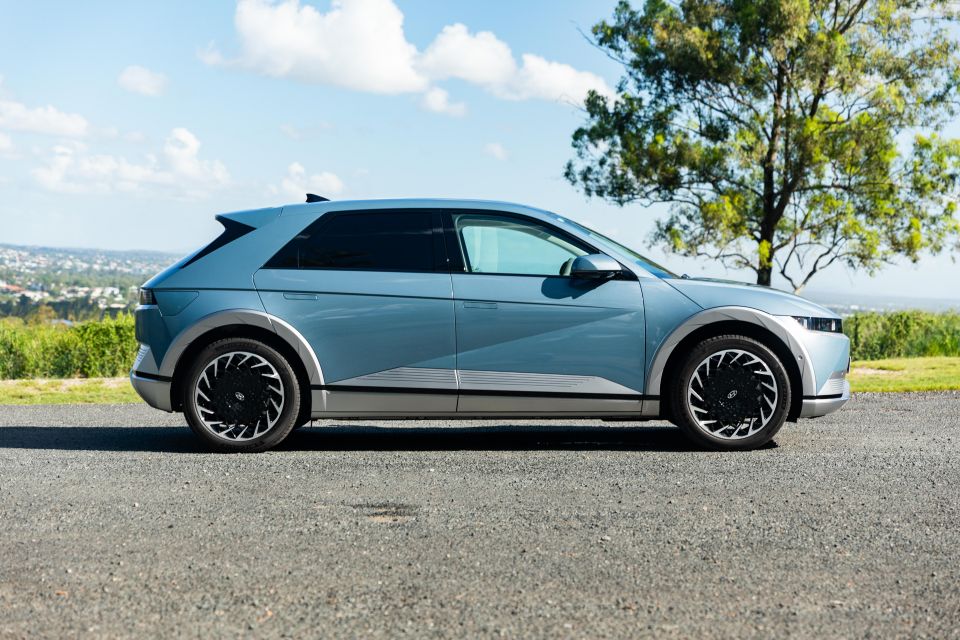
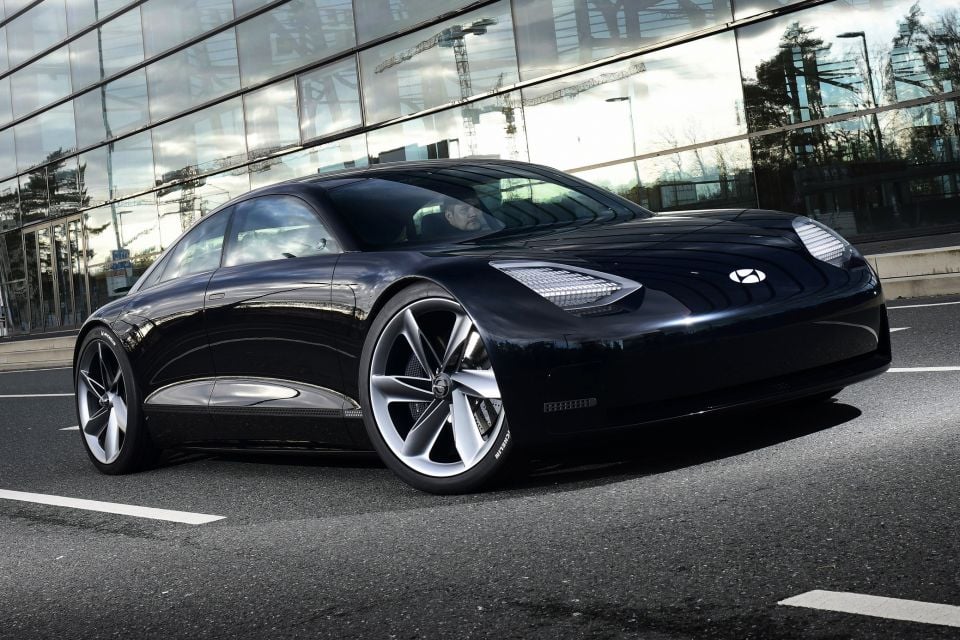


With its newly established Ioniq range, Hyundai has clearly opted towards giving its designers the freedom for each model in the line-up to have its own personality.
Correspondingly, the Ioniq 6 fastback-sedan debuts the idea of ‘Emotional Efficiency’ whilst retaining some linkages to its boxier Ioniq 5 sibling, such as with the continued use of ‘Parametric Pixels’ throughout the car, for the light signatures.
Acting as the production version of the Prophecy concept, the Ioniq 6 is expected to launch in Australia sometime in 2023.
MORE: 2023 Hyundai Ioniq 6, aero-friendly EV revealed
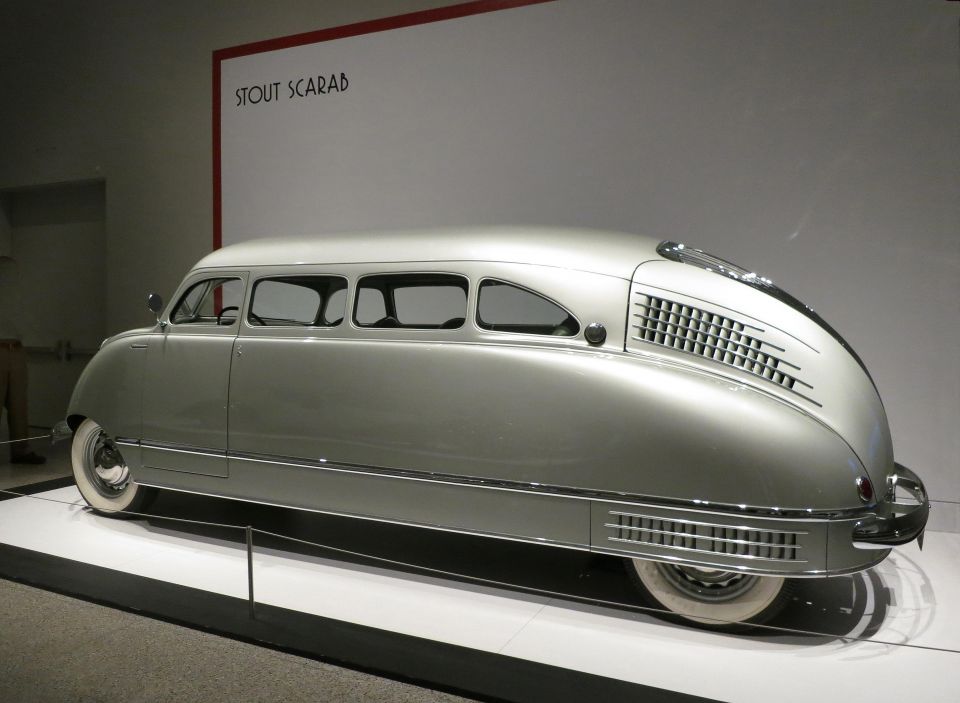

Arguably the defining element of the Ioniq 6’s design is the side profile, which the Korean brand claims is directly inspired by the streamlined cars produced during the mid-20th century.
Indeed, head of Hyundai styling Simon Loasby cites everything from the Stout Scarab aerodynamically-shaped prototype people-mover that was never mass produced, to the six-metre long Phantom Corsair, to the 1947 Saab UrSaab, as being key influences.
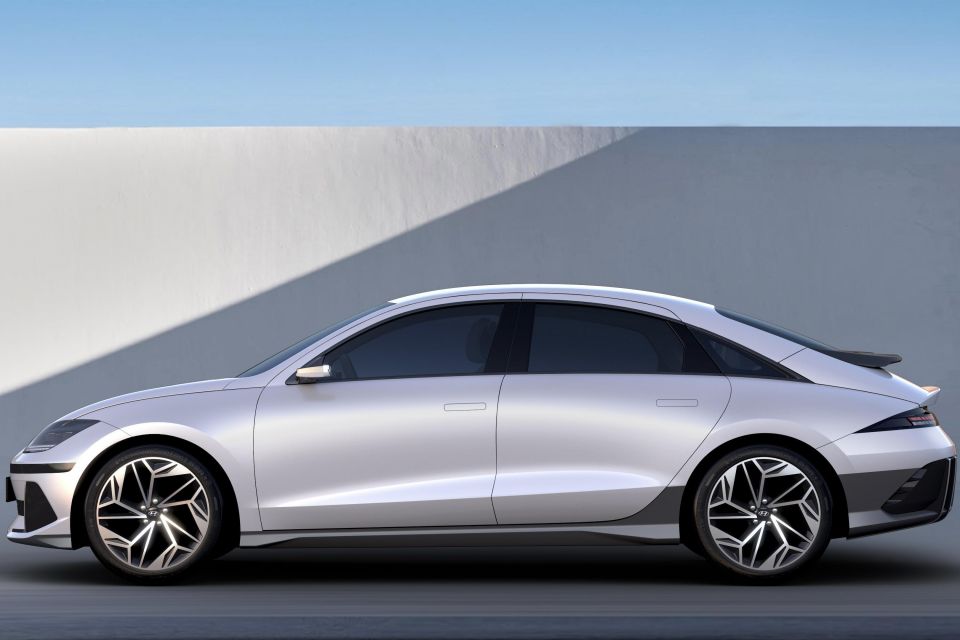
Practically, what this means is that rather than the traditional three-box sedan with separated A, B and C pillars, the Ioniq 6 has one organic curve as its roofline that appears to have been shaped by wind flowing around the car, accompanied by lower bodywork that is clean and smooth, featuring an absence of creases or excessive character lines.
In this sense, the Ioniq 6 also appears to take some direction from the ‘four-door coupé’ design pioneered by Mercedes-Benz with its CLS and CLA models.
Hyundai has ensured that the ostensibly aerodynamic form is backed by function, and the side profile features several elements that help the Ioniq 6 achieve a drag coefficient of just 0.21 – lower than rivals such as the Tesla Model 3 (0.23) and likely to be the lowest at its price point.
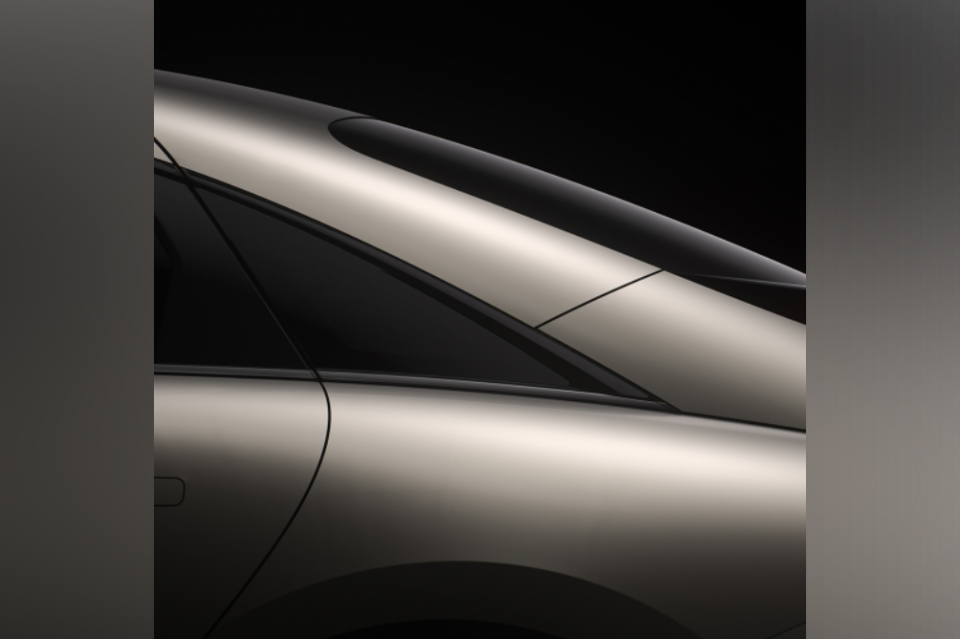
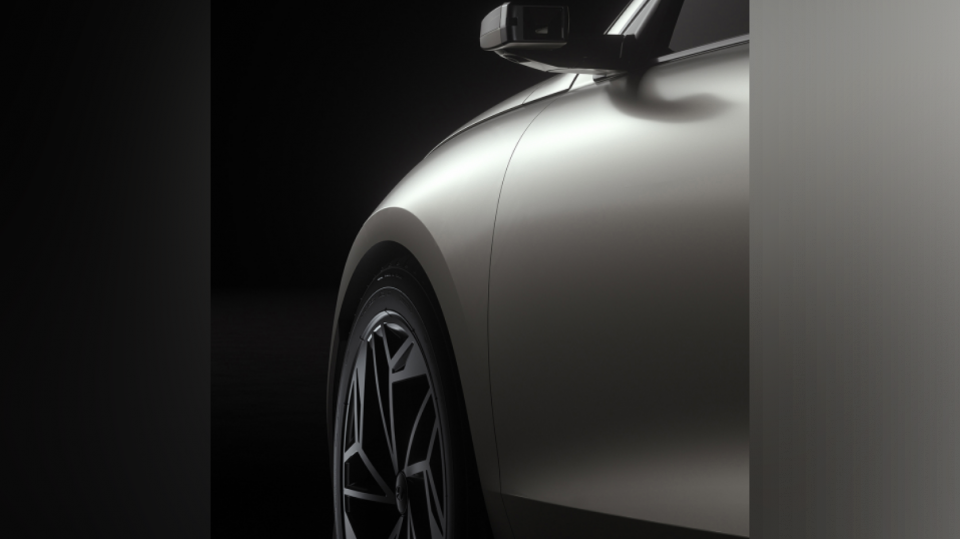
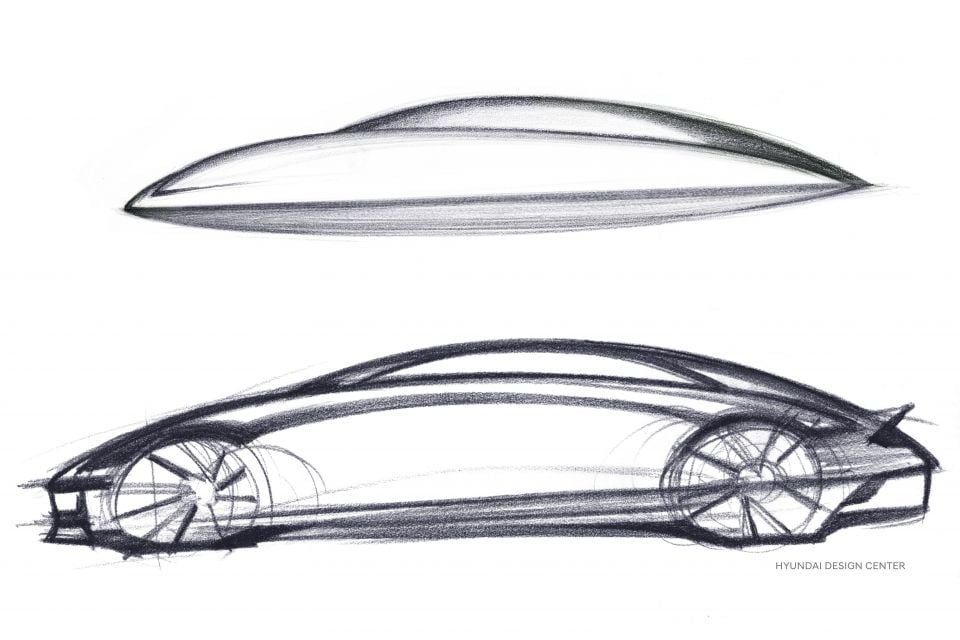
These features include doorhandles flush with the bodywork that also enhance the sleek appearance of the side profile, the availability of cameras to replace the side mirrors, as well as bodywork extensions to reduce the size of the wheel-arch gap for the front wheels.
One of the features that detracts from the clean impression created by the side profile is the use of conventional framed doors. If examined closely, the shut-lines for these doors eat into the upper roofline, creating a messy impression that distracts from the otherwise unbroken roofline.
Instead, using coupé-style frameless doors would have eliminated the need for these shut-lines, and would have created a more seamless appearance.
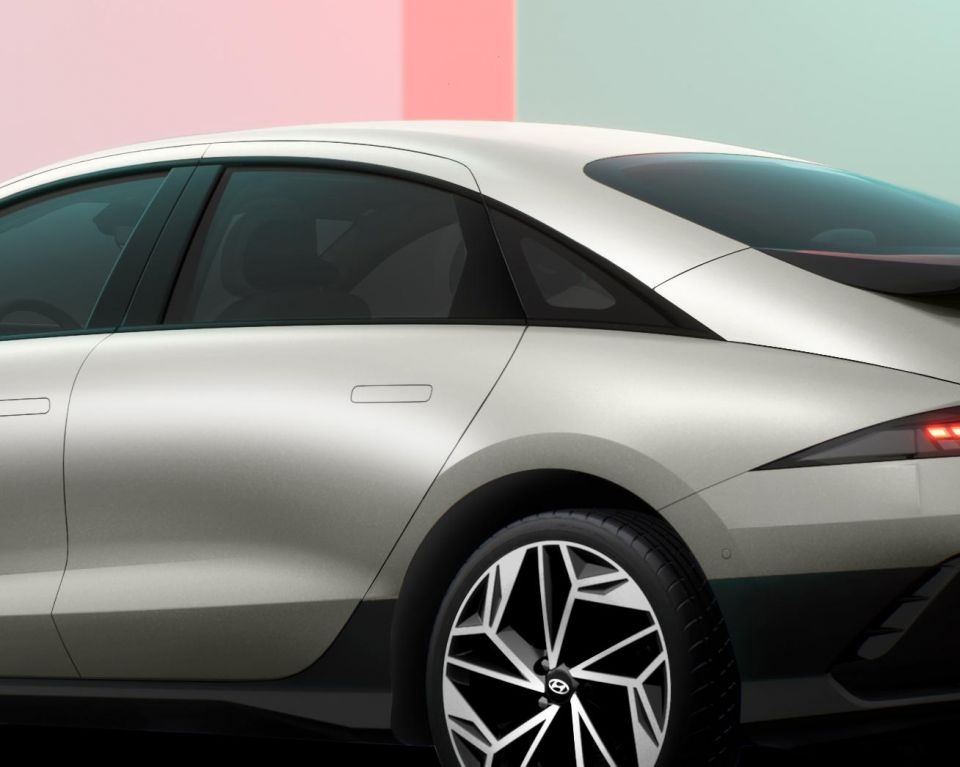
The tail of the Ioniq 6 is perhaps the next most striking design element, and it is here where the links between this car and its Ioniq 5 sibling become more obvious.
Whilst the Ioniq 6 makes use of a sloping fastback silhouette, it features a new interpretation of the ‘Parametric Pixels’ that form the signature design motif for its Ioniq 5 counterpart.
Light bars are currently trending in automotive design, and the Ioniq 6 continues this with one composed of distinctive square pixels, to lend the car a retro-futuristic aesthetic.
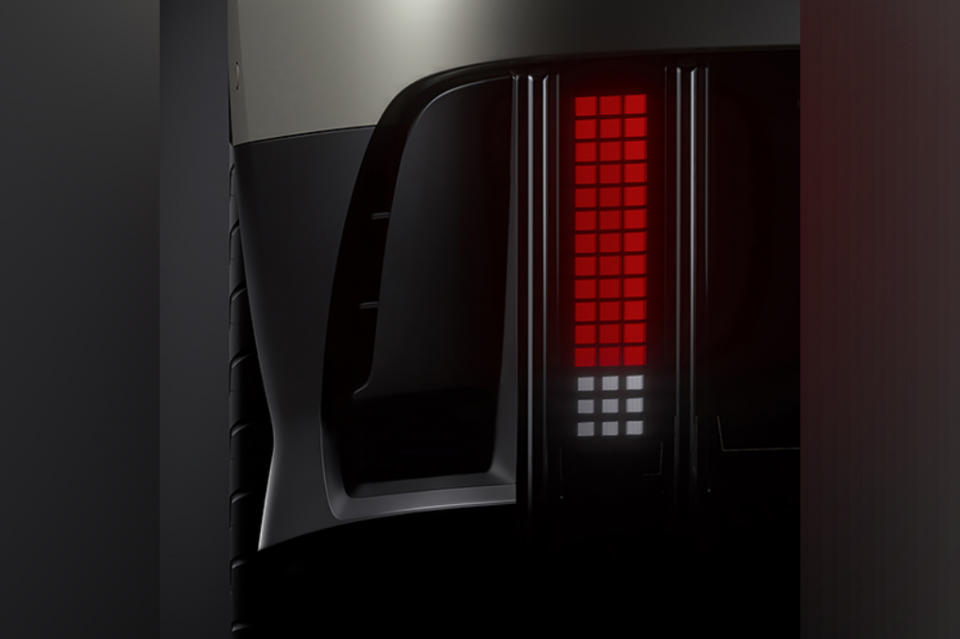

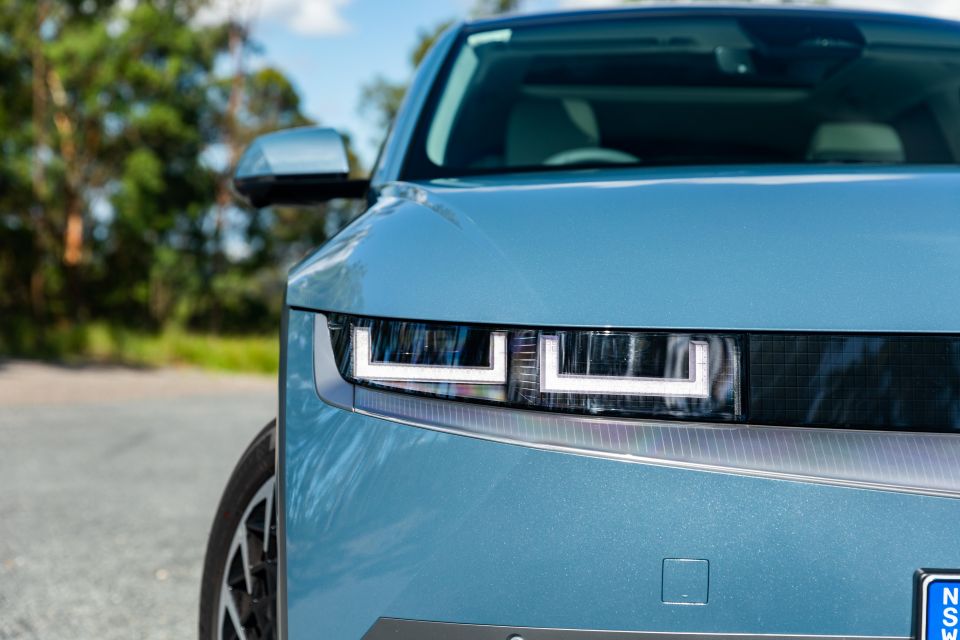
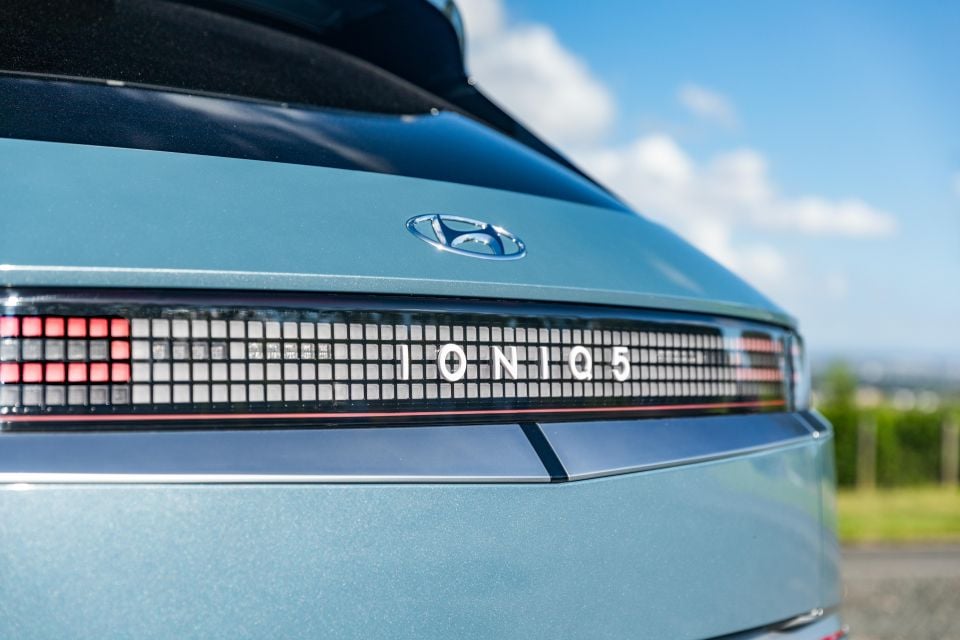
This is further supplemented by the almost diffuser-style rear bumper, which appears to incorporate rear fog lights, reversing lights and reflectors in a vertically oriented Parametric Pixel design, aping the dramatic tail-lights from the Prophecy concept.
Whilst the Ioniq 6’s fastback tailgate already appears to feature an integrated rear spoiler, it is complemented by a ducktail spoiler with its own light bar, mounted just below the rear windscreen.
Whilst Hyundai claims that this additional spoiler is necessary for optimised aerodynamics, it also bears clear resemblances to models such as the Saab 900 and Porsche 911 that pioneered this approach.
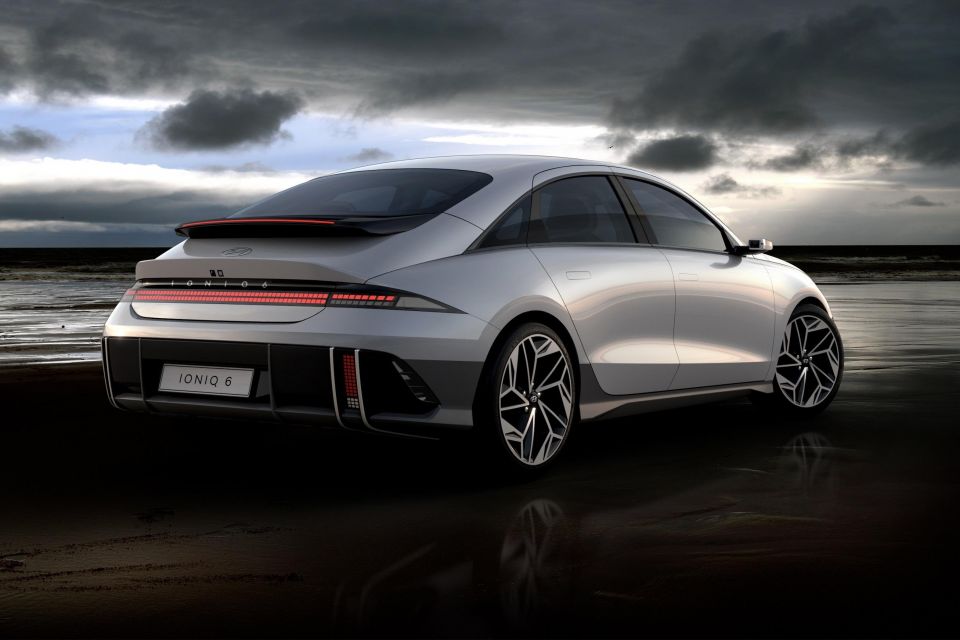
Compared to the dramatic side profile and tail-end, Ioniq 6 designers have adopted a relatively restrained front end. That doesn’t mean it is devoid of character, however.
Like the Ioniq 5, the Ioniq 6 sits on the dedicated E-GMP architecture designed specifically for electric vehicles, and with no need to accommodate a large combustion engine, the Ioniq 6’s bonnet can be far more steeply raked (and shorter) than on comparable combustion-engined models, creating a low front-end that further reduces the coefficient of drag.
Unlike rival EVs, Hyundai has not fallen into the trap of over-stylising the front-end either with unnecessary or overtly aggressive intakes or other apertures.

An EV needs a minimal amount of cooling for its motors, and correspondingly, Hyundai has integrated ducts behind active air flaps, that enhance aerodynamics (and styling) when closed, whilst opening at higher speeds or under load to provide the cooling required.
Similarly, all ADAS sensors and cameras are neatly and uniformly integrated into an elegant black band running across the width of the front-end, that echoes the ducktail spoiler at the back of the car.
The headlights also reflect the Parametric Pixel theme evident from the rear of the car, by using this motif as the daytime running light.

‘Mindfulness’ is an important wellbeing and mental health concept today, and the Ioniq 6 aims to capitalise on this by creating a “mindful personal space on wheels” inside.
This translates to an interior that provides a spacious, at-home feeling, making use of aspects such as a completely flat rear floor, pull-out drawer style glovebox and various eco-friendly materials such as PET fabric for the headliner, and carpets made from recycled fishing nets.
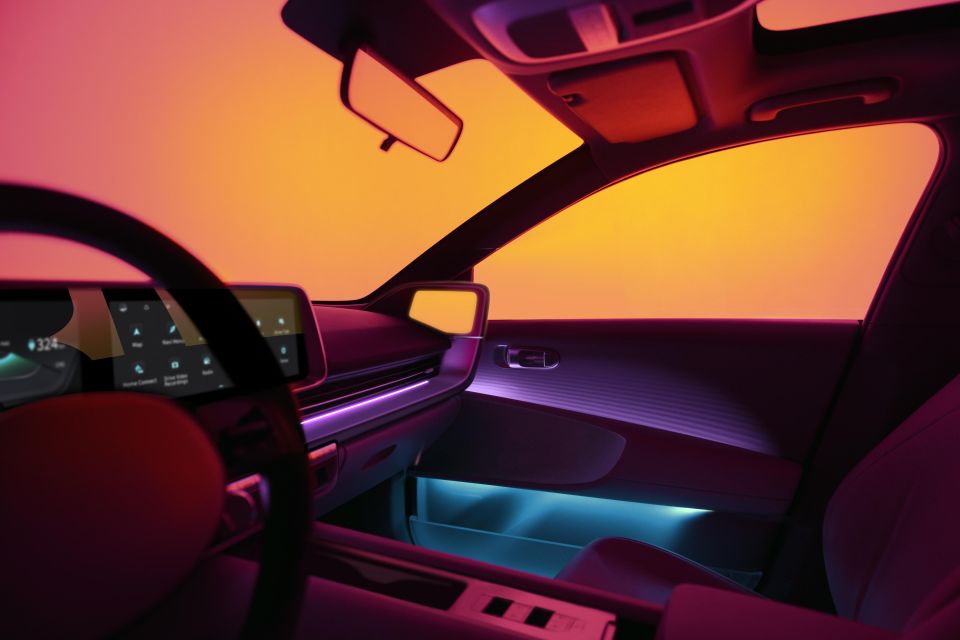
Further contributing to the mindfulness concept is the use of highly configurable ambient lighting. Unlike other cars which simply place strips of LED lighting along the dashboard and along the door cards, the Ioniq 6 features hidden LEDs that project light indirectly onto the doors, creating a more subtle ‘waterfall’ lighting effect.
To top it off, Hyundai has even replaced the standard steering wheel logo with four LED dots, that can tell you at a glance the battery’s charge level or that the voice assistant is currently functioning.
Dig these weekend design pieces? More can be found here:
MORE: Design Exposé – Lexus RX MORE: Design Exposé – Range Rover and Range Rover Sport MORE: Design Exposé – Maserati MC20 MORE: Design Exposé – BMW 7 Series and i7 MORE: Design Exposé – Hyundai Ioniq 5 MORE: Design Exposé – Renault Mégane E-Tech Electric MORE: Design Exposé – Kia Sportage MORE: Design Exposé – Volkswagen Golf R MORE: Design Exposé – Porsche Carrera GT MORE: Design Exposé – Hyundai i20 N MORE: Design Exposé – BMW M4 (G82) MORE: Design Expośe – Mercedes-AMG GLE63 S
Where expert car reviews meet expert car buying – CarExpert gives you trusted advice, personalised service and real savings on your next new car.


Matt Campbell
5 Days Ago


James Wong
4 Days Ago


Max Davies
3 Days Ago


Josh Nevett
2 Days Ago


Josh Nevett
1 Day Ago
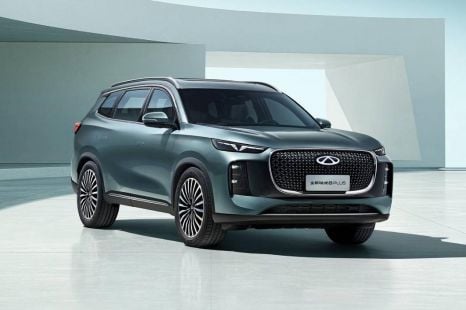

William Stopford
13 Hours Ago